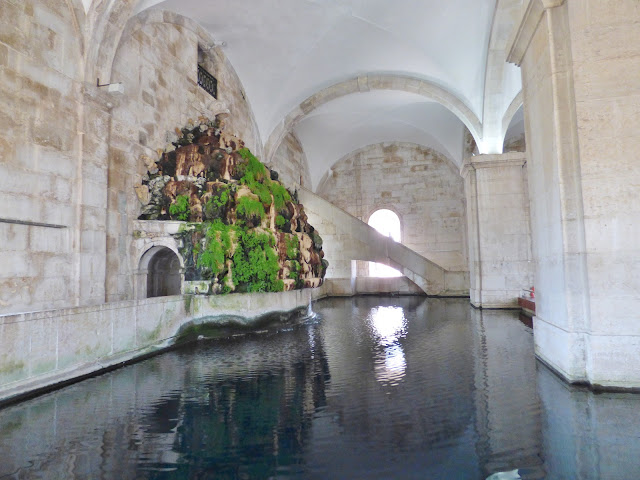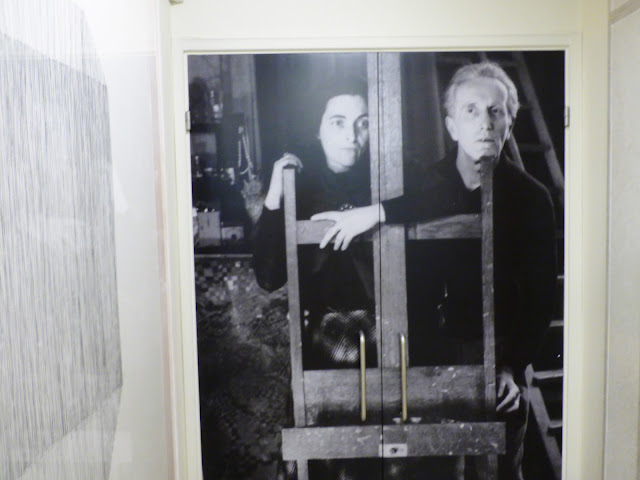We were on our way to Praça de Amoreiras to visit the Mãe d’Água das Amoreiras Reservoir. This was the water source for Lisbon for 300 years, it is the end of the Águas Livres Aqueduct which was built by Hungarian architect Carlos Mardel from 1746 to 1748, work continuing until the end of the century. The aqueduct brings the water 14kms from springs at Belas in the Sintra area, this distance includes the extraordinary arches of the Alcântara valley, which cover a length of 941 metres with 35 arches including the largest stone arch of this type in the world at 65.29 m high and 28.86 m wide, it ends at the huge reservoir building with its soaring cathedral feel space. From here it was pumped into the city to serve public fountains, factories, convents and noble houses. The aqueduct and reservoir were left completely intact and undamaged after the great earthquake of 1755 which destroyed much of the city.
The water spouts from the mouth of a dolphin onto a cascade, built using stones carried from the springs of the Águas Livres Aqueduct, it flows into the reservoir that is 7.5m deep, with a capacity to store 5,500 m3. Four columns rise supporting a vaulted cupola ceiling which in turns supports the magnificent terrace overlooking the city of Lisbon.
Back down in the Praça we stopped to have a café at the charming kiosk in the garden before visiting the Arpad Szenes and Maria Helena Vieira da Silva Foundation.
The gallery is dedicated to the work of the Portuguese artist and her Hungarian husband Arpad Szenes.
In 1928 Vieira da Silva left Lisbon to study sculpture in Paris, but decided to focus on painting. By 1930 she was exhibiting in Paris and had married Arpad. After a brief sojourn back in Lisbon and a period spent in Brazil during WW II (1940–1947), Vieira da Silva lived and worked in Paris the rest of her life. She adopted French citizenship in 1956. She received the Grand Prix National des Arts in 1966, the first woman so honoured. She was named a Chevalier of the Legion of Honor in 1979 and died in Paris in 1992.
The gallery building was their studio during their brief time in Lisbon. Unfortunately the Portuguese government did not grant them citizenship after they both lost their original status whilst living in Paris before WWII.
In the 1930s Vieira da Silva began producing her characteristic works using heavy impasto to create complex arrangement of small rectangles. By the late 1950s she was internationally known for her dense and complex compositions and the fragmented forms, spatial ambiguities, the restricted palette of cubism and abstract art. She is considered to be one of the most important Post-War abstract artists . Her work is related to French Tachisme, American Abstract expressionism, and Surrealism. Her paintings often resemble mazes, cities seen in profile or from high above.




















No comments:
Post a Comment
Follow the latest news from Finca al-manzil- What to do and see in Extremadura and Beyond.............